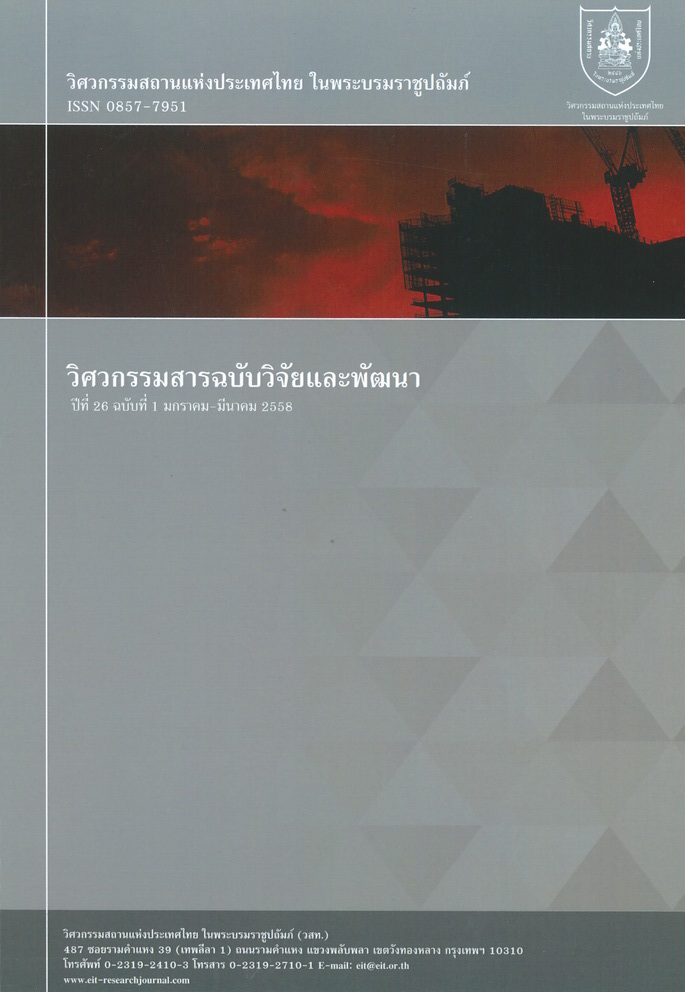THE PERFORMANCE EVALUATION WITH FINGER AND DIGITAL PEN USAGE ON TABLET OF STUDENTS BASE ON FITTS’ LAW AND STEERING LAW
Main Article Content
Abstract
การประเมินความสามารถในการใช้กล้ามเนื้อมัดเล็กของเด็กซึ่งได้แก่ มือ และนิ้วมือในปัจจุบันใช้การประเมินในเชิงจิตวิสัย โดยให้เด็กเขียนหรือวาดรูปตามต้นแบบที่กำหนดและพิจารณาว่าเด็กมีความสามารถผ่านเกณฑ์หรือไม่ แต่วิธีการดังกล่าวยังไม่สามารถวัดระดับความสามารถในเชิงปริมาณได้ งานวิจัยนี้ได้ประเมินความสามารถการเขียนและวาดรูปในเชิงปริมาณผ่านการใช้นิ้วมือและปากกาดิจิตอลบนแท็บเลต มีผู้เข้าร่วมการทดลองเป็นเด็กนักเรียน อายุ 7-12 ปี จำนวน 100 คน โดยผู้เข้าร่วมการทดลองได้ทดสอบใช้งานแท็บเลต ด้วยงาน 2 ลักษณะคืองานแตะ (Tap) ตามแนวทางกฎของฟิตส์ (Fitts’ Law) และงานลาก (Drag) ตามแนวทางกฎของสเตียริง (Steering Law) จากผลการวิจัยพบว่าสมรรถนะการใช้นิ้วมือและปากกาดิจิตอลบนแท็บเลตของเด็กเพิ่มขึ้นตามช่วงอายุซึ่งมีความสอดคล้องกับพัฒนาการของเด็ก และได้กำหนดค่ามาตรฐานของสมรรถนะการใช้นิ้วมือและปากกาดิจิตอลบนแท็บเลตของเด็กปกติ นอกจากนี้ยังได้ทดลองนำไปใช้เปรียบเทียบกับสมรรถนะของเด็กซึ่งมีพัฒนาการช้าและผิดปกติทางร่างกายกับกลุ่มเด็กปกติ
At present, the capability evaluation of the small muscle usage such as the hands and fingers movement in children, commonly evaluated base on subjective methodology. The subjective testing (using writing and drawing tasks) results as pass or not pass. However, those methods cannot measure as quantitative methodology. This study evaluated the children’s quantitative capability of writing and drawing using a finger and a digital pen on the tablet. One hundred participants, aged 7–12 year olds, were tested using the tablet in two types of tasks, as tapping task based on the Fitts’ Law and dragging task based on the Steering Law. The experimental results showed that the using performance of a finger and a digital pen on the tablet, increased along with their ages, which is agree with the child development theory. Moreover, a standard of the performance of using fingers and a digital pen on the tablet from normal children was established. Finally applied this method to identify the performance of an autistic child from normal children
Article Details
The published articles are copyright of the Engineering Journal of Research and Development, The Engineering Institute of Thailand Under H.M. The King's Patronage (EIT).


